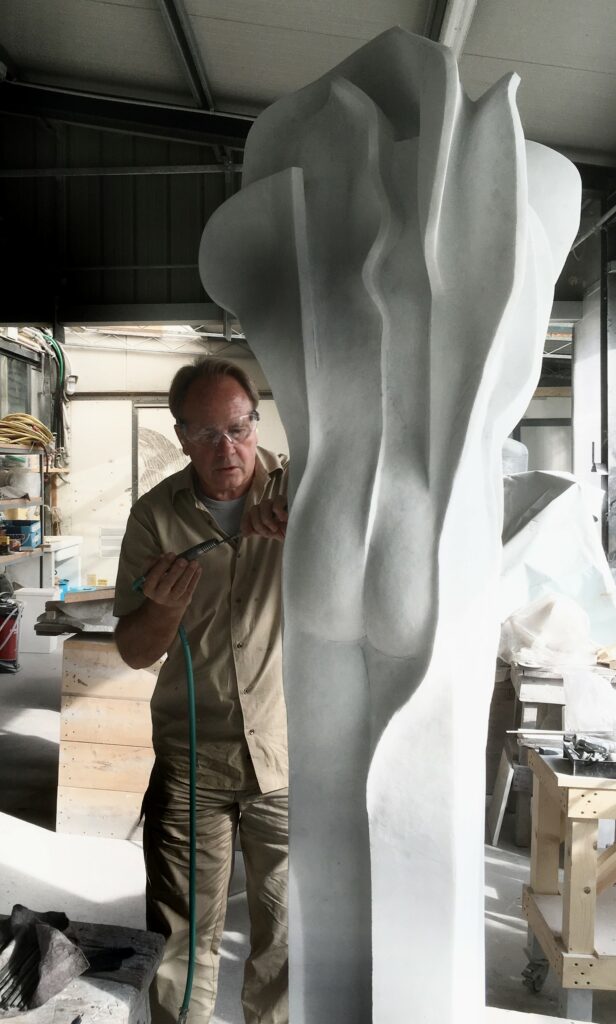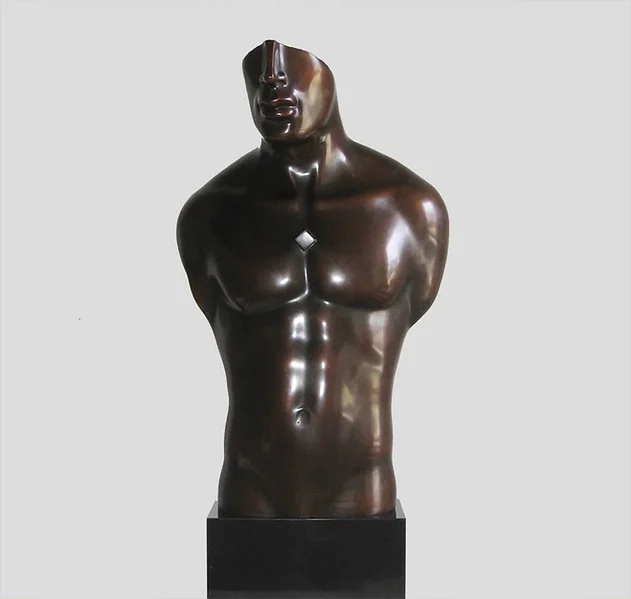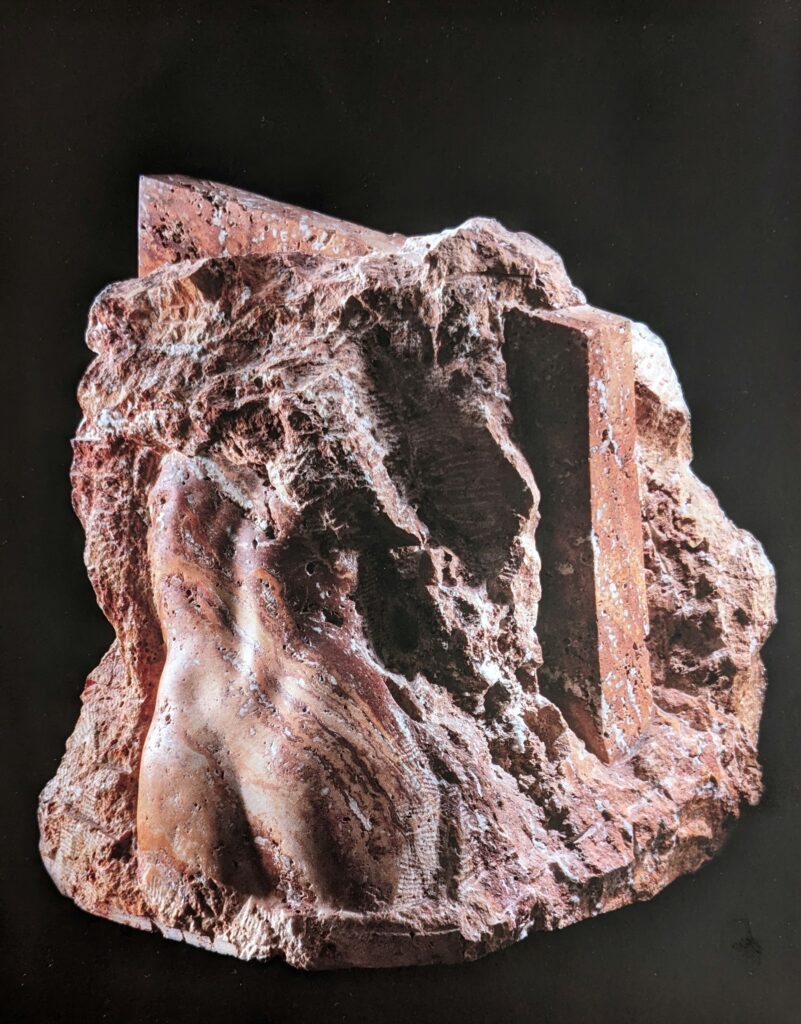Eppe de Haan (1949) won in 2009 de Van Vlissingen Art Foundation Prijs. Pietrasanta, Italië speelde een belangrijke rol in het begin van De Haan als kunstenaar. Terwijl hij daar cursussen volgde, kreeg De Haan veel artistieke kennissen die zijn ontwikkeling in de kunstvorm mede beïnvloedden. Pietrasanta is een thuis geworden waarin elk zicht en geluid dient om de zintuigen te stimuleren en te inspireren. Eppe’s manier van werken aan gelijktijdige projecten is een bewijs van het feit dat hij nooit zonder ideeën is voor de figuren waarin hij leven blaast door ze los te breken van hun marmeren blokken.
Het boek over de artistieke reis en het proces van De Haan, Een Nederlandse beeldhouwer in Toscane: Eppe de Haan in Pietrasanta, is geschreven door John Sillevis en uitgegeven door Waanders. Dit is het eerste boek in de reeks Inspiration.
De tentoonstelling van Eppe was in juni 2009 te zien bij Hotel Des Indes in Den-Haag. Eppe: “De expositie met de bijbehorende uitgave van het boek heeft mij diverse kleine en grote opdrachten opgeleverd en deuren geopend van kunstverzamelaars.”
Eppe de Haan is een Haagse beeldhouwer en is aan de Koninklijke Academie voor beeldende Kunsten in Den Haag opgeleid als schilder. In zijn werk lijkt hij te zoeken naar wat niet te zien is. Zijn zoektocht leidt hem naar de driedimensionaliteit van de beeldhouwkunst. Deze kunstvorm biedt hem de mogelijkheid verborgen diepten te ontsluieren, te ontdekken wat onder de opgebroken oppervlakte ligt, om aan de hand van een detail het totaal te suggereren, en verschillende aspecten naast elkaar te plaatsen om zo de complexiteit en het mysterie van zijn onderwerp te reflecteren. Er is een impliciete beweging in de Haan’s sculpturen, een gevoel van verleden en heden. De sterke compositie in zijn schilderijen is steeds te herkennen in zijn beeldhouwwerk. De schoonheid van marmer, de inherente sensualiteit ervan, en de noodzaak van discipline roepen de spanning op tussen controle en vrijheid, thema’s die centraal staan in Eppe de Haan’s beelden.
Al ruim 25 jaar wisselt Eppe zijn leven in Den-Haag af met wonen en werken in Pietrasanta in Toscane. Deze keuze lag voor de hand. De Apuaanse Alpen en de Versilia-regio worden al lang beschouwd als een van de levendigste kunstcentra ter wereld, met een schat aan ambachtswerkplaatsen, ateliers en galeries voor kunstenaars. Als gevolg hiervan is Pietrasanta de thuisbasis geworden van vele kunstenaars van internationale faam, die een groot deel van het jaar aan hun eigen projecten werken in nauw contact met de lokale ambachtslieden.
Het werken te midden van een internationaal gezelschap collega’s is voor Eppe enorm inspirerend en de nabijheid van de klassieke traditie zette hem aan tot het maken van monumentale sculpturen. Beeldhouwen biedt Eppe de mogelijkheid in een blok marmer te ontdekken wat onder de oppervlakte verborgen ligt. Het is de juiste balans, het evenwicht zoeken tussen ideale schoonheid en realiteit, tussen kracht en sensualiteit, tussen zwaarte en gewichtloosheid, tussen het mannelijke en vrouwelijke.
In ieder beeld laat Eppe zijn handtekening achter. Een vierkant blokje. De vierkantjes bieden een structuur die de sensualiteit van de figuur lijkt te beheersen en deze tegelijkertijd te bevrijden. Het uitgespaarde vierkant herinnert ook aan het oorspronkelijke blok waar het uit is gehakt. Het is een raadselachtig elementje in het geheel: een doosje vol geheimen, een aanduiding van de ziel, de oorsprong.

Eppe de Haan is een Haagse beeldhouwer en is aan de Koninklijke Academie voor beeldende Kunsten in Den Haag opgeleid als schilder. In zijn werk lijkt hij te zoeken naar wat niet te zien is. Zijn zoektocht leidt hem naar de driedimensionaliteit van de beeldhouwkunst. Deze kunstvorm biedt hem de mogelijkheid verborgen diepten te ontsluieren, te ontdekken wat onder de opgebroken oppervlakte ligt, om aan de hand van een detail het totaal te suggereren, en verschillende aspecten naast elkaar te plaatsen om zo de complexiteit en het mysterie van zijn onderwerp te reflecteren. Er is een impliciete beweging in de Haan’s sculpturen, een gevoel van verleden en heden. De sterke compositie in zijn schilderijen is steeds te herkennen in zijn beeldhouwwerk. De schoonheid van marmer, de inherente sensualiteit ervan, en de noodzaak van discipline roepen de spanning op tussen controle en vrijheid, thema’s die centraal staan in Eppe de Haan’s beelden.
Al ruim 25 jaar wisselt Eppe zijn leven in Den-Haag af met wonen en werken in Pietrasanta in Toscane. Deze keuze lag voor de hand. De Apuaanse Alpen en de Versilia-regio worden al lang beschouwd als een van de levendigste kunstcentra ter wereld, met een schat aan ambachtswerkplaatsen, ateliers en galeries voor kunstenaars. Als gevolg hiervan is Pietrasanta de thuisbasis geworden van vele kunstenaars van internationale faam, die een groot deel van het jaar aan hun eigen projecten werken in nauw contact met de lokale ambachtslieden.
Het werken te midden van een internationaal gezelschap collega’s is voor Eppe enorm inspirerend en de nabijheid van de klassieke traditie zette hem aan tot het maken van monumentale sculpturen. Beeldhouwen biedt Eppe de mogelijkheid in een blok marmer te ontdekken wat onder de oppervlakte verborgen ligt. Het is de juiste balans, het evenwicht zoeken tussen ideale schoonheid en realiteit, tussen kracht en sensualiteit, tussen zwaarte en gewichtloosheid, tussen het mannelijke en vrouwelijke.
In ieder beeld laat Eppe zijn handtekening achter. Een vierkant blokje. De vierkantjes bieden een structuur die de sensualiteit van de figuur lijkt te beheersen en deze tegelijkertijd te bevrijden. Het uitgespaarde vierkant herinnert ook aan het oorspronkelijke blok waar het uit is gehakt. Het is een raadselachtig elementje in het geheel: een doosje vol geheimen, een aanduiding van de ziel, de oorsprong.

